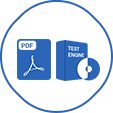Last Update 23 hours ago Total Questions : 128
The TOGAF Business Architecture Foundation Exam content is now fully updated, with all current exam questions added 23 hours ago. Deciding to include OGBA-101 practice exam questions in your study plan goes far beyond basic test preparation.
You'll find that our OGBA-101 exam questions frequently feature detailed scenarios and practical problem-solving exercises that directly mirror industry challenges. Engaging with these OGBA-101 sample sets allows you to effectively manage your time and pace yourself, giving you the ability to finish any TOGAF Business Architecture Foundation Exam practice test comfortably within the allotted time.
Consider the image showing basic architectural concepts:

What is an objective of the ADM Preliminary Phase?
Which of the following best describes a business capability?
What is the role of an Architecture Board?
Which of the following is a difference between an organization map and an organization chart?
What is defined as the effect of uncertainty on objectives?
Which of the following best describes the purpose of the Gap Analysis technique?
Question: Which ADM Phases match the following purpose descriptions?


